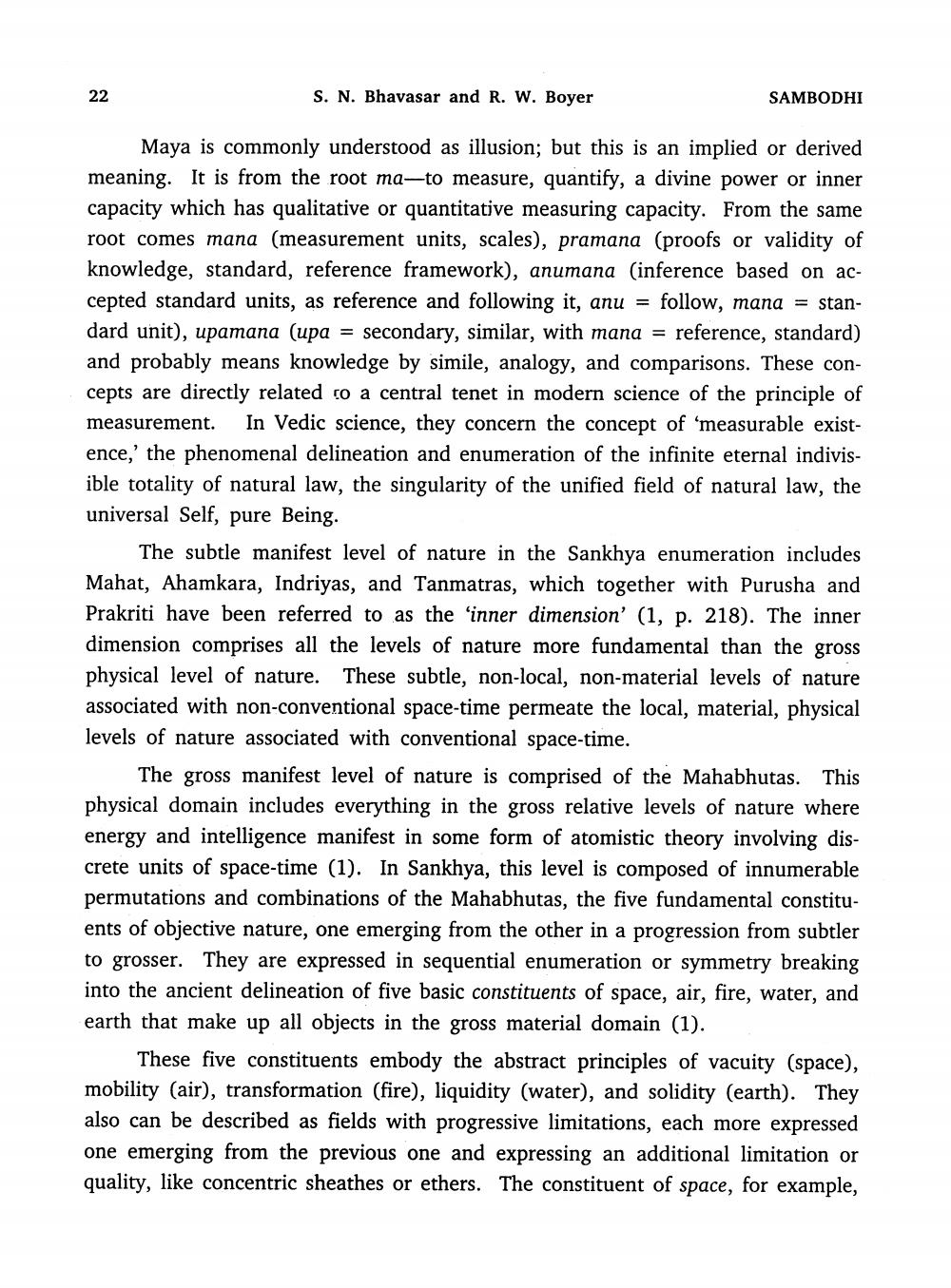________________
S. N. Bhavasar and R. W. Boyer
SAMBODHI
Maya is commonly understood as illusion; but this is an implied or derived meaning. It is from the root ma-to measure, quantify, a divine power or inner capacity which has qualitative or quantitative measuring capacity. From the same root comes mana (measurement units, scales), pramana (proofs or validity of knowledge, standard, reference framework), anumana (inference based on accepted standard units, as reference and following it, anu = follow, mana = standard unit), upamana (upa = secondary, similar, with mana = reference, standard) and probably means knowledge by simile, analogy, and comparisons. These concepts are directly related to a central tenet in modern science of the principle of measurement. In Vedic science, they concern the concept of 'measurable existence,' the phenomenal delineation and enumeration of the infinite eternal indivisible totality of natural law, the singularity of the unified field of natural law, the universal Self, pure Being.
The subtle manifest level of nature in the Sankhya enumeration includes Mahat, Ahamkara, Indriyas, and Tanmatras, which together with Purusha and Prakriti have been referred to as the 'inner dimension' (1, p. 218). The inner dimension comprises all the levels of nature more fundamental than the gross physical level of nature. These subtle, non-local, non-material levels of nature associated with non-conventional space-time permeate the local, material, physical levels of nature associated with conventional space-time.
The gross manifest level of nature is comprised of the Mahabhutas. This physical domain includes everything in the gross relative levels of nature where energy and intelligence manifest in some form of atomistic theory involving discrete units of space-time (1). In Sankhya, this level is composed of innumerable permutations and combinations of the Mahabhutas, the five fundamental constituents of objective nature, one emerging from the other in a progression from subtler to grosser. They are expressed in sequential enumeration or symmetry breaking into the ancient delineation of five basic constituents of space, air, fire, water, and earth that make up all objects in the gross material domain (1).
These five constituents embody the abstract principles of vacuity (space), mobility (air), transformation (fire), liquidity (water), and solidity (earth). They also can be described as fields with progressive limitations, each more expressed one emerging from the previous one and expressing an additional limitation or quality, like concentric sheathes or ethers. The constituent of space, for example,




